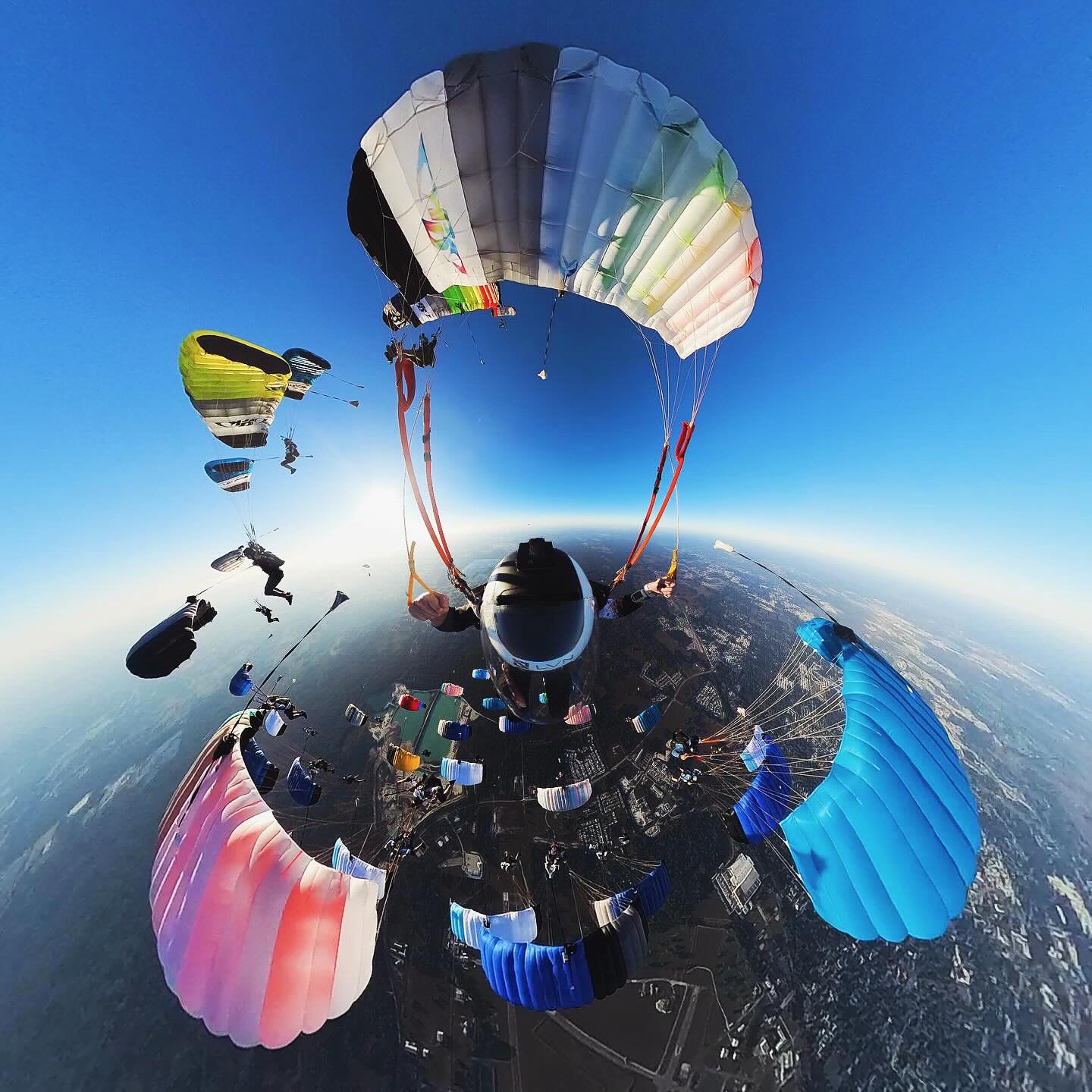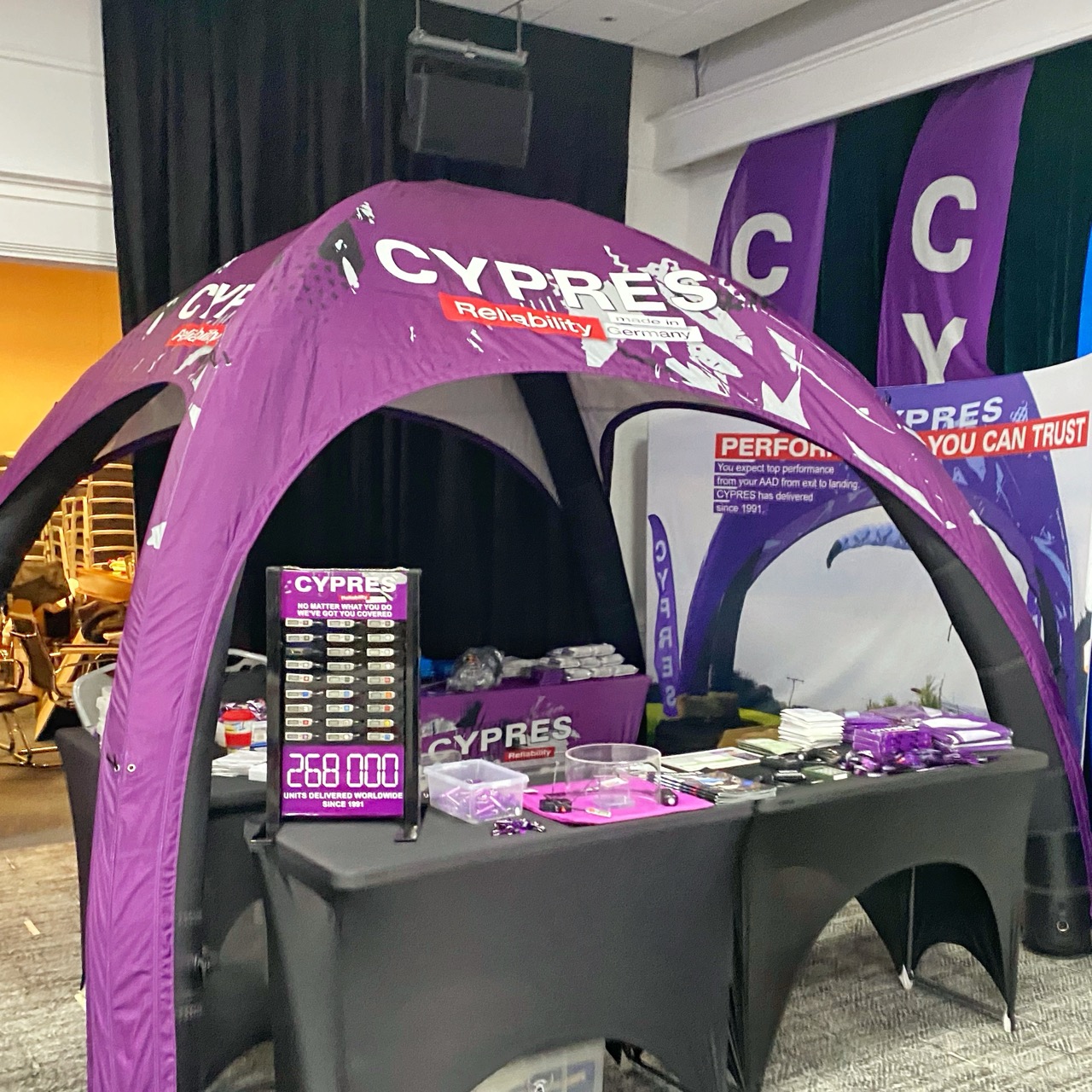
Sponsorship 1: Eyeing It Up
Friday, September 6, 2024
Ready… Go
One of the sweetest things about skydiving is the constant state of change. There are plenty of parts of the industry that have settled into a tested stasis, but the edges are expanding all the time. Creative and motivated people, supported by advancing technology and community interconnectedness, mean every season uncovers something new and exciting. The industry is driven in part by facilitating what is fresh and fancy, then supporting the right people to give it some structure, ultimately resulting in an accessible market for the things needed to get it done and look cool while doing it.

Skydiving is a small sport and all the stuff is expensive. The annual expenditure of an active jumper is pretty high compared to a lot of adventure sports, which when combined supports a pretty robust sponsorship system. A single motivated athlete getting it right can make a very real difference to the equipment selections within a particular community, and represent meaningful value to their sponsor who creates and sells a small number of costly products.
Things are changing all the time, which is why examining the system now and then is worthwhile. The following pieces of writing are designed to present some perspective on how sponsorship works, and some real practical steps to help people consider the what, why, and how.

Work-Life Balance
Do you want skydiving to be your hobby or your job? Once you have spent the kind of time in the sport that means you are angling for sponsorships, occupying either extremity of this scale becomes less likely. You might have a full-time role at the dropzone but jump for fun when you have a bit of free time, or perhaps you spend your weekends zooming with your friends and have started advertising your coaching skills here and there as your ability and experience grow. This percentage split between fun and work can shift – by month, week, day, or even jump by jump.
Nothing is free. Entering into a sponsorship agreement means effectively taking on additional percentage points as your work. A single partial sponsorship for a piece of gear is only a small element of your overall total, but by the time you are dealing with gear from multiple companies, the obligations and regular effort become a not-insignificant, tangible part of your regular time and the overall process. Fun and work can exist simultaneously, but can also be starkly separate just when you don’t want them to be.
While sponsorship of athletes and teams is a productive and necessary part of our sport, there is also plenty to be said for having your hobby and passion exist entirely separate from what you clock in and clock out for. Getting to tell someone that a company gave you a thing for free is fun, but if you are doing it right you worked for that privilege.
Be honest about what you want skydiving to be for you.

Don’t You Know Who I Am Supposed To Think I Am?
There are a few different ways to function as an athlete – most notably by winning medals, being cool, and teaching others. If you are up to your neck in one of these things, then you likely have a hand in the others, but the demanding nature of each role means one will probably be easily definable as a primary function. If you are training for and entering into competitions, a majority share of your time and money will be going into this (basically as much of both as you can spare). Relying on coolness is particularly challenging because it requires being gifted with instinct. A lot of your time and resources go into being in the right place at the right time to be a part of whatever the cool kids are doing at the pointy end of popularity. Teaching others is the most based and un-flashy way of being in the game. Outwardly it may appear less influential than standing on a podium or being involved in some fancy project, but skydiving is very much an in-person affair, and nothing generates influence like a teacher you trust helping you to learn a challenging thing.
The industry needs all types of athletes, but over recent years things have shifted in favour of seeking out true educators.

What Joely Thinks:
At CYPRES we get hundreds of sponsorship applications every year – many interesting and valid, some made of total lunacy. With lots of teams and individuals to investigate, it can be challenging to make the right choices. Like many things in skydiving, an in-person interaction helps a great deal – which is why more and more our shortlist will contain people we have met and spent time around.

Out on the road at boogies and competitions, a part of my job is to observe people as they work – with an eye always on who to prioritise when we are reviewing applications. Adventure sports trade on commodified coolness, and being motivated by the cool stuff is an effective part of how things move forward. Balance is key though, and the relentless pursuit of drip can get right in the way of the contribution you can make to the sport. We are always searching for balanced athletes – those who spend time on flash personal goals but are never too busy being cool to help someone out.
Ask yourself this: Are you the person on the dropzone who people will go to with their questions?
Being super cool can easily mean that you are also kinda scary. It takes consideration, self-awareness and real effort to be both admirably fancy and not scary.
Tags: CYPRES
Adventure, Tips, and Adrenaline
Subscribe to Our Newsletter
By signing up for our newsletter you declare to agree with our privacy policy.

